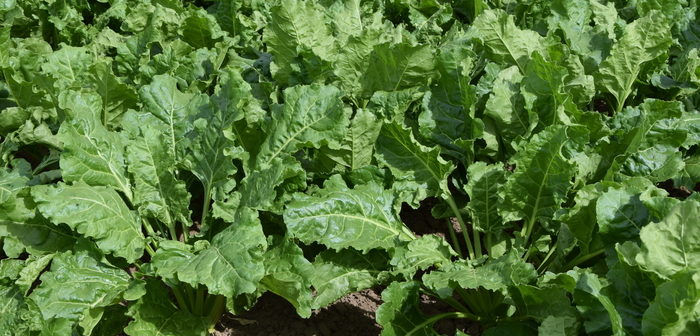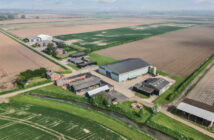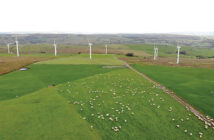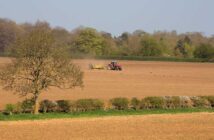This season sees the launch of a competition to help sugar beet growers close the gap between the theoretical potential of crops and actual farm yields.
The British Beet Research Organisation says UK yields up to 145t/ha have been achieved, around double the farm average.
Yield potential varies considerably across farms and fields though, so the Beet Yield Competition, a joint initiative between BBRO, British Sugar, Hutchinsons and NFU, is looking for growers who maximise crop potential rather than produce the highest yield.
Some 32 growers are taking part and winners will be those achieving the highest percentage of theoretical yield potential for their chosen site. Baseline potential is assessed by BBRO using a beet growth model developed and validated against commercial crops over many seasons. This is based on a range of factors including location, soil type, drilling date, weather and variety. It is revised through the season to account for rainfall variations.
The competition applies to whole fields of at least 2ha, including headlands.
Four regional winners, one for each beet factory, will be announced after the 2017/18 campaign ends, from which an overall winner is selected.
“The aim is to increase yields among participating growers and use findings to improve national crop performance,” says Hutchinsons root crop technical manager Darryl Shailes.
“Many factors are beyond growers’ control, but there are things which can be managed relatively easily. Until you start measuring the theoretical yield potential of a site you can’t tell how close crops are to fulfilling it.”
As well as allowing comparisons of “actual” and “potential” farm yields and improving the understanding of how the gap between the two can be closed, the competition provides opportunity to use aggregate data to examine trends and relationships, says Dr Simon Bowen of BBRO.
“We are integrating all the data on to a common platform provided by KisanHub. Crop development, yield, soil, weather, and rotational information will all be in one place to allow us to analyse the effects of different factors. The more data we collect the more powerful this analysis becomes.”
*More growers are wanted for 2018/19. Contact your BS area manager or visit http://bbro.co.uk/our-news/2016/beet-yield-competition
Refining farm practices
A desire to check whether existing farm practices are as effective as possible and see if there are any areas for improvement prompted Velcourt’s Rougham Estate manager Simon Eddell to join the 2017 competition.
The farm grows 110ha of beet in-house plus 24ha on a contract farming agreement, across a range of soil types from blowing sands to medium clay near Bury St Edmunds, Suffolk.
Mr Eddell is well aware rainfall and soil type have the biggest impact on yields, but is keen to identify any other limiting factors. “Any small gains can add up to make a big difference.”
Yields average 75t/ha, but over 80t/ha has been achieved in good seasons and he is confident 90-95t/ha is possible with favourable conditions. “On our lighter land yield is driven by rainfall in July and August. There’s no irrigation, so without regular rain during this period crops really suffer.”
A switch from plough-based establishment to non-inversion tillage (Sumo, power-harrow, drill) six years ago, combined with rye and vetch-based cover crops and regular organic matter additions has improved drought resilience though, Mr Eddell says.
“It’s taken several years to see any benefit, but we noticed this spring drought ‘hot spots’ came in later than previously.
“If the competition concludes rainfall and soil type are the limiting factors then I know I’m doing the most I can to get the best out of the crop. If there is something I can change, that will be employed across the beet area.”
Driving yields
Many factors determine yields, but the biggest – apart from rainfall -is rapid establishment, Mr Shailes says.
“Crops need to get to 100% canopy cover as quickly as possible to intercept light and build sugars over the main summer growing period.”
Key areas to focus on include:
- Soil management and seedbed preparation
- Early nitrogen – 30-40kg N/ha at drilling and remainder at full emergence
- Weed control – robust control, avoid crop damage
- Fungicides – budget at least one maybe two sprays
- Control pests, particularly beet leaf miner
- Tailor variety to soil type, disease risk, nematode threat, etc.
- Beware increased beet cyst nematode incidence where growing oilseed rape in the rotation.




